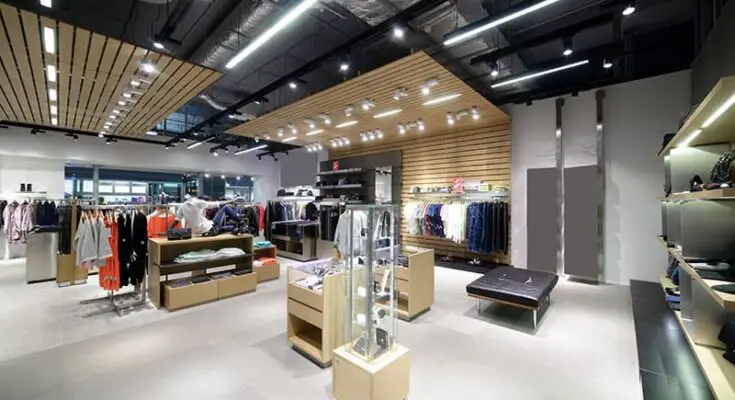In retail, lighting isn’t just functional—it sets the mood and attracts customers. Track lighting is especially useful for highlighting specific areas. Over the years, lighting options have advanced, with LED and halogen being the most common choices in modern stores. Both have influenced how retailers design their setups, each offering distinct pros and cons. Picking the right one is key to highlighting products and improving the shopping experience, which can impact sales and brand perception.
Choosing between LED retail track lighting and halogen involves more than just price and brightness. Here, we’ll compare LED and halogen lighting, focusing on energy efficiency, light quality, and cost. Factors such as durability, maintenance, and versatility, often overlooked, will also be examined, as they play a major role in the final decision.
The Basics: LED vs Halogen Lighting
LED and halogen lights, both common in retail, have key differences in how they work and perform. LEDs are energy-efficient, turning most of their power into light instead of heat, which helps lower electricity costs—an attractive option for budget-conscious retailers. Halogen bulbs, similar to incandescent ones but more efficient, provide a warmer, more natural light that some people find flattering for products and spaces.
LEDs are usually brighter and more focused, perfect for spotlighting specific areas or items. Halogen lights, on the other hand, give off a softer, more diffused glow that can create a cozy atmosphere. LEDs also last longer and need replacing less often, reducing maintenance costs, while halogens may still appeal to those who prefer a more authentic light feel.
Lighting Quality and Aesthetic Appeal
The quality of light and its visual impact are key in a retail setting, where first impressions matter. LEDs and halogen bulbs affect how merchandise looks in different ways. LEDs come in various color temperatures, from warm to cool, allowing retailers to adjust the lighting to match their brand or the season. They also rate highly on the Color Rendering Index (CRI), which measures how well a light shows colors compared to natural sunlight—important for displaying products accurately.
Halogen lights, known for their warm glow similar to daylight, offer a comfortable and realistic light that highlights textures and colors well. They typically have a CRI close to 100, meaning they show colors very accurately. The choice between these lights depends on the desired vibe; LEDs offer flexibility for modern spaces, while halogen’s warmth suits retailers seeking authenticity and elegance.
Energy Consumption and Cost Effectiveness
The comparison of energy consumption and cost between LED and halogen lighting provides key insights for retail decision-makers. While LEDs may cost more upfront, their lower energy use and longer lifespan make them cost-effective over time, often covering the initial expense. LEDs use up to 80% less electricity than halogen bulbs, leading to much lower utility bills, which is vital for budget-conscious retailers looking to maximize profits.
On the other hand, halogen lights are cheaper initially, but their higher energy use results in increased operating costs. Their shorter lifespan also means more frequent replacements and maintenance, which can add up over time and offset any initial savings. Considering these factors, LEDs often prove to be the more economical choice in the long run, despite the higher upfront cost.
Durability and Maintenance Needs
Durability is a key factor when comparing LED and halogen lighting. LED lights last much longer than halogen bulbs, which means fewer replacements, less maintenance, and fewer interruptions for retailers. Their sturdy design also makes them reliable in various conditions. On the other hand, halogen bulbs have shorter lifespans and need to be replaced more often, which can increase maintenance costs and create more waste.
From a sustainability perspective, LEDs are also more energy-efficient, helping reduce carbon footprints and supporting green initiatives. Retailers focused on cost savings and sustainability might prefer LEDs, while those who appreciate the traditional feel of halogen lighting may accept the extra maintenance.
Versatility and Application Flexibility
LED and halogen track lighting both offer flexibility in retail spaces, but they serve different needs. LED lighting is easy to install and provides precise, adjustable lighting, perfect for highlighting specific products or areas. Its lightweight design makes it simple to retrofit into existing tracks, ideal for retailers who frequently update displays. LEDs also allow for changing color temperatures, making them versatile for various environments, from boutiques to grocery stores.
On the other hand, halogen lighting, while more traditional, creates a warm and inviting atmosphere, well-suited for cozy spaces like bookstores or artisanal shops. While halogens offer softer directional lighting, LEDs are often preferred for modern, dynamic spaces.
Choosing the right lighting for a retail space involves weighing factors like energy efficiency, light quality, and maintenance needs. While LEDs offer long-term cost savings, versatility, and a range of color temperatures, halogen lights provide a warm, natural glow that appeals to some retailers. Ultimately, the decision between LED and halogen should align with a store’s specific goals, from creating a welcoming atmosphere to showcasing products in the best light. By considering both aesthetic and practical elements, retailers can enhance the shopping experience while keeping energy costs and maintenance manageable.



